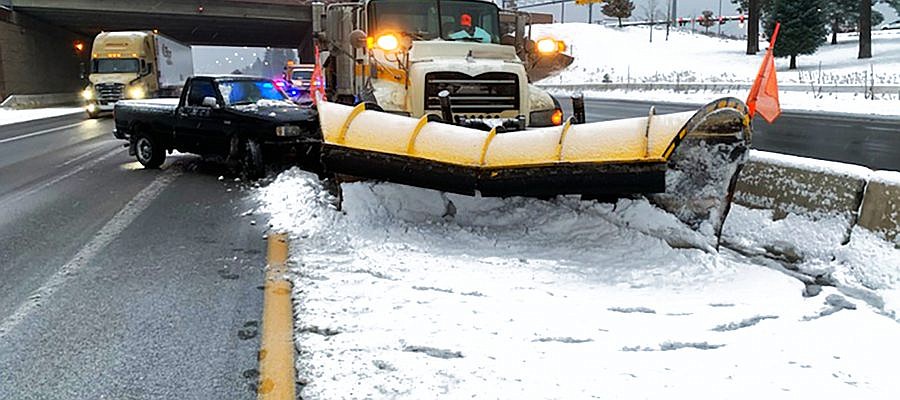ITD informs on plow strikes
SANDPOINT — Exercising caution around snow plows can play a strategic role in the success of local storm management, state transportation officials said.
That’s because plow strikes can cause significant damage and slowdowns when roads become dangerous during hazardous weather.
Last winter, there were 17 plow strikes in Idaho, including five in North Idaho with three of those happening on the same day, Heather McDaniel, Idaho Transportation Department public information officer, said during a recent presentation to Sandpoint Kiwanis. So far, this winter season has seen two plow strikes state-wide.
“Both have happened down south, one being a strike in District 5 near American Falls where a vehicle behind a plow was driving too fast for conditions and rear-ended one of our trucks,” McDaniel said. “The other occurred in District 6 between Ririe and Swan Valley where a vehicle tried passing on the right and struck the wing plow.”
Current operations in District 1, which includes the state’s five northern counties, 200 employees and 86 plow drivers, mainly address storm management. With eight foreman areas and 24/7 coverage, the district has a 73% mobility metric. A mobility metric defines the percentage of time during storms that the roads are free and clear of snow and ice.
Following the presentation, one audience member asked about the financial cost of recovering from plow strikes. However, Marvin Fenn, engineering manager with ITD, responded that plow strikes cause more than just financial loss.
“With strikes, you’ve got a plow out, you’ve got a driver out — because he’s under investigation, the road is shut down for hours,” Fenn said. “I would guess each plow strike in damage to the truck is sitting in about 20 to 30 grand, easy. Then being out of service — that’s what we care about — the road is out of service and no one is plowing that road, or the other plow guy has to double up so you’ve got a plow driver every 20 miles of road.”

